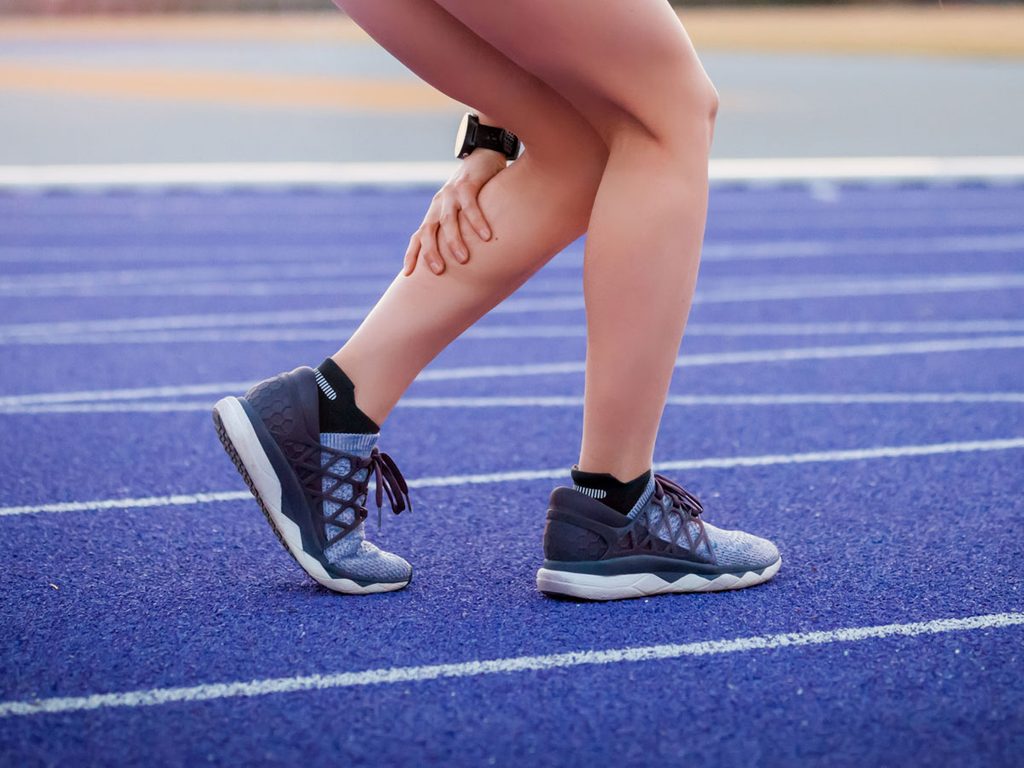What Causes Charley Horses and How to Prevent Them

A charley horse can strike anyone at any time, but some people may be more likely to experience these painful muscle spasms.
If you have ever had an incredibly painful leg cramp come on fast and furiously you have likely experienced a charley horse. This type of muscle spasm tends to occur when a muscle is overused or injured, and can sometimes strike in the middle of the night. “The spasms are the result of involuntary muscle contractions,” explains Robert Glatter, an emergency physician at Lenox Hill Hospital in New York City.
Charley horses can last for minutes, hours, or days. They can strike anywhere in the body, but the most common spots are the back of your lower leg/calf, back of your thigh, or the front of your thigh.
Common causes of charley horses
Exactly what causes a charley horse is not known, but common triggers include muscle injury, overuse or strain from vigorous exercise, not stretching before or after working out, exercising in extreme heat or cold, and dehydration, Dr. Glatter says.
Lack of blood flow to a specific muscle group and low levels of sodium, calcium, potassium, or other electrolytes may also contribute to the risk of developing a charley horse, he says. Electrolytes are minerals—sodium, potassium, chloride, magnesium, calcium, phosphate, bicarbonate—that dissolve in your body’s fluids, creating electrically charged ions that affect how your body functions. “Nerve compression due to a herniated disc in your back may also be contributory,” he says. The slipped disc causes a pinched nerve that results in the calf cramp. It’s quite common to develop a charley horse while sleeping as well, and the pain may even wake you up.
(Related: Find out what totally weird things your body does overnight.)
Charley horse risk factors
Some people may be more likely to develop a charley horse than others. Risks include smoking, obesity, taking water pills or diuretics, and/or drugs called statins to lower cholesterol, Dr. Glatter says. “Athletes tend to get them more frequently as a result of muscle fatigue from overuse,” he says. “Obese people may have inadequate circulation to the lower extremities.”
Getting a charley horse is also very common in pregnancy, especially during the second and third trimester, adds Dominic King, DO, a sports medicine and intervention orthopedic physician at the Cleveland Clinic in Ohio. “This is because of reduced circulation in your legs from pressure of the baby on blood vessels or rapid change in weight associated with pregnancy.”
Other diseases that cause abnormalities in electrolytes—such as liver disease or thyroid disease—may also increase your risks of developing a charley horse cramp, he says. The older you are, the greater your chances, too. “As we age we have reduced muscle mass, and the muscle that is there can be easily overstretched,” Dr. King says.
Treating charley horses
There are things you can do in the moment to reduce the pain of a charley horse. “Try to massage the tight area gently or put some pressure or weight on the affected leg in a gentle stretch,” says Tina Castiello, a physical therapist at the Hospital for Special Surgery in New York City. “If you stretch too hard, you will make the cramp worse.”
Warm compresses or water will relax the muscle. “If it is sore following the cramp, use ice,” she adds.
How to prevent a charley horse
Prevention is important when it comes to these cramps, says Jennifer Beck, an orthopedic surgeon at UCLA Health in Los Angeles. “Make sure you do a proper warm-up and cool-down before and after exercise,” she suggests. “Focus on your hamstring and quad muscles.” Staying hydrated with plain water and/or electrolyte replacement drinks like Gatorade can also prevent a charley horse.
Dr. King encourages people who have had surgery to keep up with their physical therapy and home exercise regimens. (Related: Learn how to perfect your form during at-home workouts.) “This way your muscles won’t become weak and more likely to charley horse when you use them,” he says. Certain medications and conditions may affect your electrolyte balance, Dr King adds. If you are prone to getting cramps, ask your doctor if you should take a multivitamin based on your health history.
If you tend to get charley horses when you are sleeping, stretch your calf muscles and drink a glass of water before bed to help prevent dehydration, says Castiello.
When to be concerned
The good news is that a charley horse is rarely anything serious. “Cramps in isolation are not too worrisome but if they travel with low back pain it could be a sign of a pinched nerve,” says Dr. King. Swelling and redness in the calf with cramping can be a sign of a potentially life-threatening deep vein thrombosis (DVT) and needs to be evaluated immediately, he stresses.
You should also see a doctor if your charley horses are frequent, prolonged, severe, and occur in multiple parts of your body, Castiello adds. “A charley horse every once in a while that you can relate back to exercising or exercising in extreme weather is likely not worrisome, but if you can’t find a reason for it and they are happening weekly or more than once a week, see a doctor as there may be something else going on.”
Next check out these 42 strange symptoms that can signal a serious disease.




